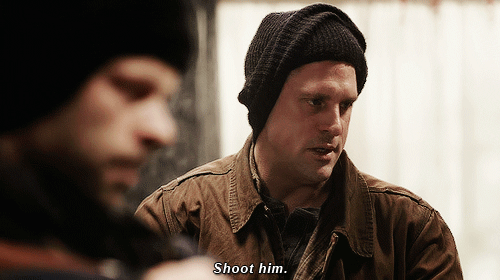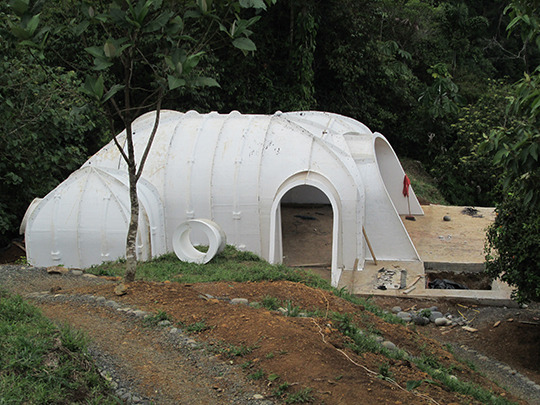Text
Writing is slamming out an epic battle in one afternoon and then getting stuck on how a character walks across the room for three weeks
39K notes
·
View notes
Text
BELONGING
I was inspired to write Belonging because I really wanted to try my hand at a gothic tale, the kind of suspenseful horror like The Turn of the Screw by Henry James, where you don’t know if the protagonist is losing her mind, has lost her mind, or not. I gave that a whirl and then Belonging took a turn and became a romance. I hope it still evokes a good gothic shiver.
https://www.amazon.com/dp/B01M25F2EO
1 note
·
View note
Link
A thousand years ago, huge pyramids and earthen mounds stood where East St. Louis sprawls today in Southern Illinois. This majestic urban architecture towered over the swampy Mississippi River floodplains, blotting out the region’s tiny villages. Beginning in the late 900s, word about the city spread throughout the southeast. Thousands of people visited for feasts and rituals, lured by the promise of a new kind of civilization. Many decided to stay.
At the city’s apex in 1050, the population exploded to as many as 30 thousand people. It was the largest pre-Columbian city in what became the United States, bigger than London or Paris at the time. Its colorful wooden homes and monuments rose along the eastern side of the Mississippi, eventually spreading across the river to St. Louis. One particularly magnificent structure, known today as Monk’s Mound, marked the center of downtown. It towered 30 meters over an enormous central plaza and had three dramatic ascending levels, each covered in ceremonial buildings. Standing on the highest level, a person speaking loudly could be heard all the way across the Grand Plaza below. Flanking Monk’s Mound to the west was a circle of tall wooden poles, dubbed Woodhenge, that marked the solstices.
Despite its greatness, the city’s name has been lost to time. Its culture is known simply as Mississippian. When Europeans explored Illinois in the 17th century, the city had been abandoned for hundreds of years. At that time, the region was inhabited by the Cahokia, a tribe from the Illinois Confederation. Europeans decided to name the ancient city after them, despite the fact that the Cahokia themselves claimed no connection to it.
Centuries later, Cahokia’s meteoric rise and fall remain a mystery. It was booming in 1050, and by 1400 its population had disappeared, leaving behind a landscape completely geoengineered by human hands. Looking for clues about its history, archaeologists dig through the thick, wet, stubborn clay that Cahokians once used to construct their mounds. Buried beneath just a few feet of earth are millennia-old building foundations, trash pits, the cryptic remains of public rituals, and in some places, even, graves.
To find out what happened to Cahokia, I joined an archaeological dig there in July. It was led by two archaeologists who specialize in Cahokian history, Sarah Baires of Eastern Connecticut State University and Melissa Baltus of University of Toledo. They were assisted by Ph.D. candidate Elizabeth Watts of Indiana University, Bloomington, and a class of tireless undergraduates with the Institute for Field Research. Together, they spent the summer opening three large trenches in what they thought would be a sleepy little residential neighborhood southwest of Monk’s Mound.
They were wrong. The more they dug, the more obvious it became that this was no ordinary place. The structures they excavated were full of ritual objects charred by sacred fires. We found the remains of feasts and a rare earthen structure lined with yellow soils. Baires, Baltus, and their team had accidentally stumbled on an archaeological treasure trove linked to the city’s demise. The story of this place would take us back to the final decades of a great city whose social structure was undergoing a radical transformation.
Keep reading
465 notes
·
View notes
Text
BELONGING
I was inspired to write Belonging because I really wanted to try my hand at a gothic tale, the kind of suspenseful horror like The Turn of the Screw by Henry James, where you don't know if the protagonist is losing her mind, has lost her mind, or not. I gave that a whirl and then Belonging took a turn and became a romance. I hope it still evokes a good gothic shiver.
https://www.amazon.com/dp/B01M25F2EO
1 note
·
View note
Text
No Name
New story, chapter one, over at Wattpad: www.wattpad.com/317125469-no-name
0 notes
Text
What is the evolutionary benefit or purpose of having periods? Why can’t women just get pregnant without the menstrual cycle?
Suzanne Sadedin, Ph.D. in evolutionary biology from Monash University
I’m so glad you asked. Seriously. The answer to this question is one of the most illuminating and disturbing stories in human evolutionary biology, and almost nobody knows about it. And so, O my friends, gather close, and hear the extraordinary tale of:
HOW THE WOMAN GOT HER PERIOD
Contrary to popular belief, most mammals do not menstruate. In fact, it’s a feature exclusive to the higher primates and certain bats*. What’s more, modern women menstruate vastly more than any other animal. And it’s bloody stupid (sorry). A shameful waste of nutrients, disabling, and a dead giveaway to any nearby predators. To understand why we do it, you must first understand that you have been lied to, throughout your life, about the most intimate relationship you will ever experience: the mother-fetus bond.
Isn’t pregnancy beautiful? Look at any book about it. There’s the future mother, one hand resting gently on her belly. Her eyes misty with love and wonder. You sense she will do anything to nurture and protect this baby. And when you flip open the book, you read about more about this glorious symbiosis, the absolute altruism of female physiology designing a perfect environment for the growth of her child.
If you’ve actually been pregnant, you might know that the real story has some wrinkles. Those moments of sheer unadulterated altruism exist, but they’re interspersed with weeks or months of overwhelming nausea, exhaustion, crippling backache, incontinence, blood pressure issues and anxiety that you’ll be among the 15% of women who experience life-threatening complications.
From the perspective of most mammals, this is just crazy. Most mammals sail through pregnancy quite cheerfully, dodging predators and catching prey, even if they’re delivering litters of 12. So what makes us so special? The answer lies in our bizarre placenta. In most mammals, the placenta, which is part of the fetus, just interfaces with the surface of the mother’s blood vessels, allowing nutrients to cross to the little darling. Marsupials don’t even let their fetuses get to the blood: they merely secrete a sort of milk through the uterine wall. Only a few mammalian groups, including primates and mice, have evolved what is known as a “hemochorial” placenta, and ours is possibly the nastiest of all.
Inside the uterus we have a thick layer of endometrial tissue, which contains only tiny blood vessels. The endometrium seals off our main blood supply from the newly implanted embryo. The growing placenta literally burrows through this layer, rips into arterial walls and re-wires them to channel blood straight to the hungry embryo. It delves deep into the surrounding tissues, razes them and pumps the arteries full of hormones so they expand into the space created. It paralyzes these arteries so the mother cannot even constrict them.
What this means is that the growing fetus now has direct, unrestricted access to its mother’s blood supply. It can manufacture hormones and use them to manipulate her. It can, for instance, increase her blood sugar, dilate her arteries, and inflate her blood pressure to provide itself with more nutrients. And it does. Some fetal cells find their way through the placenta and into the mother’s bloodstream. They will grow in her blood and organs, and even in her brain, for the rest of her life, making her a genetic chimera**.
This might seem rather disrespectful. In fact, it’s sibling rivalry at its evolutionary best. You see, mother and fetus have quite distinct evolutionary interests. The mother ‘wants’ to dedicate approximately equal resources to all her surviving children, including possible future children, and none to those who will die. The fetus ‘wants’ to survive, and take as much as it can get. (The quotes are to indicate that this isn’t about what they consciously want, but about what evolution tends to optimize.)
There’s also a third player here – the father, whose interests align still less with the mother’s because her other offspring may not be his. Through a process called genomic imprinting, certain fetal genes inherited from the father can activate in the placenta. These genes ruthlessly promote the welfare of the offspring at the mother’s expense.
How did we come to acquire this ravenous hemochorial placenta which gives our fetuses and their fathers such unusual power? Whilst we can see some trend toward increasingly invasive placentae within primates, the full answer is lost in the mists of time. Uteri do not fossilize well.
The consequences, however, are clear. Normal mammalian pregnancy is a well-ordered affair because the mother is a despot. Her offspring live or die at her will; she controls their nutrient supply, and she can expel or reabsorb them any time. Human pregnancy, on the other hand, is run by committee – and not just any committee, but one whose members often have very different, competing interests and share only partial information. It’s a tug-of-war that not infrequently deteriorates to a tussle and, occasionally, to outright warfare. Many potentially lethal disorders, such as ectopic pregnancy, gestational diabetes, and pre-eclampsia can be traced to mis-steps in this intimate game.
What does all this have to do with menstruation? We’re getting there.
From a female perspective, pregnancy is always a huge investment. Even more so if her species has a hemochorial placenta. Once that placenta is in place, she not only loses full control of her own hormones, she also risks hemorrhage when it comes out. So it makes sense that females want to screen embryos very, very carefully. Going through pregnancy with a weak, inviable or even sub-par fetus isn’t worth it.
That’s where the endometrium comes in. You’ve probably read about how the endometrium is this snuggly, welcoming environment just waiting to enfold the delicate young embryo in its nurturing embrace. In fact, it’s quite the reverse. Researchers, bless their curious little hearts, have tried to implant embryos all over the bodies of mice. The single most difficult place for them to grow was – the endometrium.
Far from offering a nurturing embrace, the endometrium is a lethal testing-ground which only the toughest embryos survive. The longer the female can delay that placenta reaching her bloodstream, the longer she has to decide if she wants to dispose of this embryo without significant cost. The embryo, in contrast, wants to implant its placenta as quickly as possible, both to obtain access to its mother’s rich blood, and to increase her stake in its survival. For this reason, the endometrium got thicker and tougher – and the fetal placenta got correspondingly more aggressive.
But this development posed a further problem: what to do when the embryo died or was stuck half-alive in the uterus? The blood supply to the endometrial surface must be restricted, or the embryo would simply attach the placenta there. But restricting the blood supply makes the tissue weakly responsive to hormonal signals from the mother – and potentially more responsive to signals from nearby embryos, who naturally would like to persuade the endometrium to be more friendly. In addition, this makes it vulnerable to infection, especially when it already contains dead and dying tissues.
The solution, for higher primates, was to slough off the whole superficial endometrium – dying embryos and all – after every ovulation that didn’t result in a healthy pregnancy. It’s not exactly brilliant, but it works, and most importantly, it’s easily achieved by making some alterations to a chemical pathway normally used by the fetus during pregnancy. In other words, it’s just the kind of effect natural selection is renowned for: odd, hackish solutions that work to solve proximate problems. It’s not quite as bad as it seems, because in nature, women would experience periods quite rarely – probably no more than a few tens of times in their lives between lactational amenorrhea and pregnancies***.
We don’t really know how our hyper-aggressive placenta is linked to the other traits that combine to make humanity unique. But these traits did emerge together somehow, and that means in some sense the ancients were perhaps right. When we metaphorically ‘ate the fruit of knowledge’ – when we began our journey toward science and technology that would separate us from innocent animals and also lead to our peculiar sense of sexual morality – perhaps that was the same time the unique suffering of menstruation, pregnancy and childbirth was inflicted on women. All thanks to the evolution of the hemochorial placenta.
https://www.quora.com/what-is-the-evolutionary-benefit-or-purpose-of-having-periods
35K notes
·
View notes
Photo
This is chapter two of “Redemption” where Sam and Dean have a run in with those hunters who shot them. It’s not quite major ass-kicking but satisfying, I hope?: http://archiveofourown.org/works/1442893
The first chapter is here: http://archiveofourown.org/works/1258528/chapters/2591023

Supernatural 30 Day Challenge: Day 8 - Least favorite character
That honor goes to this douchebag:

Walt. From Dark Side of the Moon. Yep, that one asshole that shot Sam and Dean. Now, Sam & Dean do get hurt a lot, but this guy really bothers me.
First of all, he doesn’t even listen to Sam. He doesn’t even know anything about how Sam started the apocalypse. Guess what, Sam killed a demon, and that started the apocalypse. Guess who kills demons every day? Hunters. So buddy boy, Sam was doing his job. It’s not his fault it started the apocalypse. Should he maybe have not been high on demon blood? Sure. Should be maybe have trusted his brother over a demon? Yep. But the fact still remains he thought he was doing his job. It’s not his fault Ruby is a manipulative bitch.
Secondly, he then shot Dean. (Which by the way, this is one of my favorite quotes ever, I’ll give him that.) “He made us, and we just snuffed his brother, you idiot. Do you wanna spend the rest of your life knowing Dean Winchester’s on your ass? Cause I don’t.” Sure, you just sealed your own death warrant, but you just shot and killed an innocent man, because you’re too much of a coward to even listen in the first place, and then kill the only witness.
I love how Dean warned them, “Go ahead, Roy, do it. But I’m gonna warn you. When I come back, I’m gonna be pissed.” This guy is too stupid to realize or listen to the fact that they’re not going to stay dead. Let’s kill the Winchester brothers, even if they’ll come back! That’ll be great! Not too bright, are you Walt?
I’m just waiting here patiently for a reunion between these two and the Winchester boys. I just hope there’s some major ass-kicking.
1 note
·
View note
Photo

When you have to make your own food, and you’ve been watching too much food network lately
421K notes
·
View notes
Photo





Hiya,
I’ve started a new tumblr to share free/open nonfiction ebooks made available by the publisher.
Lascasbookshelf.tumblr.com
The first few titles include
Slavery and the English Country House, 2013
Black London: Life Before Emancipation, 1995
Revealing the African Presence in Renaissance Europe, 2012
as well as some titles that deal with 20th history
I’d be grateful if you could let your readers know
Cheers
— lascasartoris
This is an absolute GEM of a tumblr! Thank you so much for letting me know and sharing these FREE BOOKS with everyone!! I have added links in above.
5K notes
·
View notes
Text
Room Emma Donoghue
The mother in this book says to the media in response to a question about her still breast-feeding Jack, "Is that all you get out of this?" And, I have to say, that was one of my first take-aways, too. How sad is that, that we're immune to the shock of a man locking away a woman? It's been in the news enough that it's more shocking that she still breast feeds a five-year-old.
It's after I finished the book, after the first rush of reading head-long to find out what happens, that little delayed time bombs go off. Realising how small the room was and how all the 'world building' in the beginning impacts so much at the end, realising how no light and no space and little food impacted Jack's size, the mother's father's reaction to her child, the fact that the mother would have to face the pervert in court. It's a book that sticks with you a long time.
0 notes
Text
Laura Zats
SF adventure with a senior citizen MC (I want lots of “I’m getting too old for this shit…”)
@LZats
9 notes
·
View notes
Text
Laura Zats
SF adventure with a senior citizen MC (I want lots of “I’m getting too old for this shit…”)
@LZats
9 notes
·
View notes
Text
Peter Senftleben
Horror in abandoned settings, i.e, City Hall Station NYC, Six Flags Jazzland, overgrown section of China’s Great Wall…
(OMG, Jazzland!!!)
@gr8thepeter
7 notes
·
View notes
Text
Fire by Kristin Cashore
I enjoyed this book, for a while. Then it got a bit boring and I skimmed large parts. It was well-written and the premise is good. The main character was interesting although hurting and in pain, therefore relying on other people, a lot. Like, a lot, lot. It's unbelievable this girl can hold herself upright. However, she manages. For the kind of book it is, I found it a pleasant book and a fun read.
0 notes















